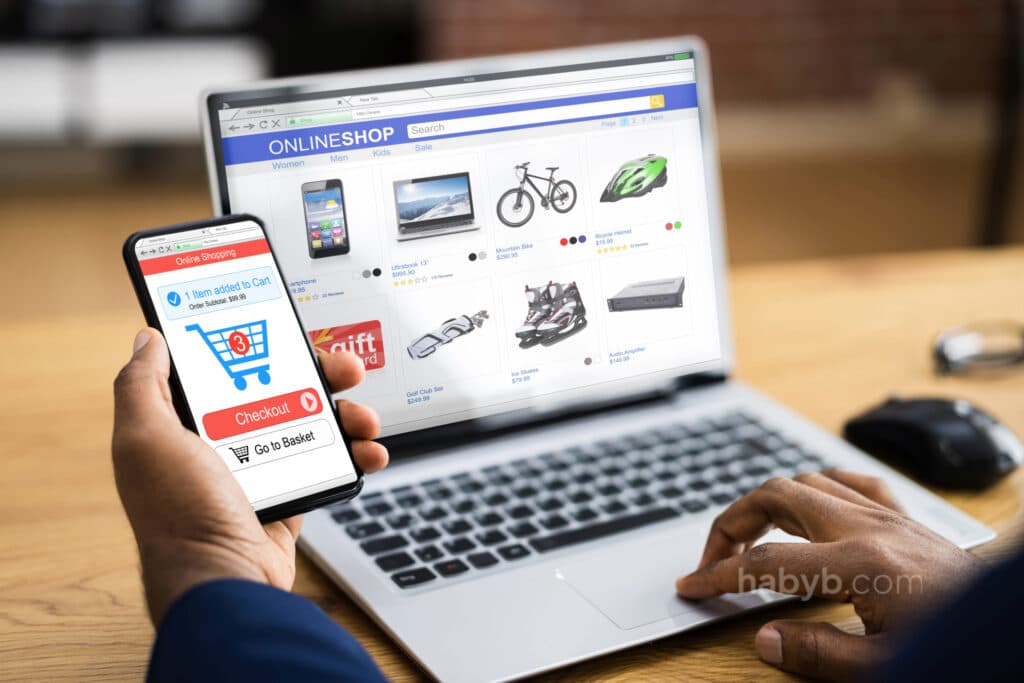In the professional world, effective communication is crucial for success, and email remains one of the primary modes of interaction. Whether you’re liaising with colleagues, clients, or stakeholders, the way you craft your emails can significantly impact your professional image. Yet, many professionals make common mistakes when writing emails—mistakes that can undermine their credibility and professionalism. This article will explore these frequent errors and offer practical tips and strategies to help you enhance your email communication skills, ensuring that your messages are clear, concise, and impactful.
1. Using Unprofessional Language
One of the most common mistakes professionals make is using unprofessional language in their emails. This includes slang, overly casual language, and even abbreviations that might be appropriate in text messages but not in professional correspondence. Phrases like “Hey,” “Gonna,” or “LOL” can detract from the professionalism of your message.
How to Avoid It:
– Know Your Audience: Always consider the recipient of your email. If you’re communicating with a colleague you’ve known for years, a more casual tone might be acceptable. However, when emailing clients, supervisors, or anyone outside your immediate work circle, it’s best to err on the side of formality.
– Use Professional Greetings: Start with a polite salutation such as “Dear [Name],” or “Hello [Name],” depending on the context. Avoid overly informal greetings like “Hey” or “Hiya.”
– Mind Your Tone: The tone of your email should reflect the professional nature of your relationship with the recipient. Maintain a level of formality that matches the context of the communication.
– Avoid Abbreviations and Slang: Abbreviations like “FYI” or “ASAP” can sometimes be acceptable, but using them excessively or in the wrong context can seem lazy or unprofessional. It’s better to spell out phrases like “For Your Information” or “As Soon As Possible” unless you’re confident that the recipient understands and expects these abbreviations.
2. Forgetting to Proofread
Nothing undermines your professionalism more quickly than sending an email riddled with typos, grammatical errors, or unclear language. This mistake is often the result of rushing through an email without taking the time to review it carefully.
How to Avoid It:
– Always Proofread: Make it a habit to read through your emails at least once before hitting “Send.” This extra step can help you catch and correct any mistakes.
– Use Spell Check Tools: Most email platforms come with built-in spell-check tools—use them. However, don’t rely solely on these tools, as they might not catch context-specific errors.
– Read Aloud: Reading your email out loud can help you identify awkward phrasing or errors that you might miss when reading silently.
– Take a Break Before Reviewing: If time allows, take a short break after writing your email before you proofread it. This break can give you a fresh perspective and make it easier to spot mistakes.
3. Being Too Wordy or Vague
Another common mistake is either providing too much information or being too vague. Long-winded emails can lose the reader’s attention, while vague emails can cause confusion and lead to unnecessary follow-up questions.
How to Avoid It:
– Be Concise: Get straight to the point. State your purpose early in the email and avoid unnecessary information. Use bullet points or numbered lists if you have multiple points to cover.
– Be Specific: Clearly outline what you need from the recipient. If you’re asking for something, specify exactly what you need and by when. If you’re providing information, ensure it’s complete and easy to understand.
– Use Clear Subject Lines: A clear, descriptive subject line helps the recipient understand the purpose of your email before they even open it. This can also help you organize your own inbox more effectively.
4. Overuse of “Reply All”
The “Reply All” function is often misused, leading to inbox clutter and frustration among recipients who don’t need to be involved in the conversation. Overusing “Reply All” can also make you appear inconsiderate of others’ time.
How to Avoid It:
– Think Before You Click: Before hitting “Reply All,” ask yourself if everyone on the original email thread needs to see your response. If not, reply only to the relevant parties.
– Be Selective: Use “Reply All” only when your response is pertinent to everyone involved. If your message is only relevant to the sender or a few recipients, reply directly to those individuals.
– Consider Separate Threads: If your reply could start a new topic or discussion, consider starting a new email thread to avoid confusion and clutter.
5. Ignoring Email Etiquette
Email etiquette refers to the customary rules and practices that govern email communication. Ignoring these unwritten rules can lead to misunderstandings or make you appear unprofessional.
How to Avoid It:
– Respond Promptly: Acknowledge receipt of emails in a timely manner, even if you don’t have a complete response ready. A quick “Thank you, I’ll get back to you soon” shows that you’ve received the email and are working on a response.
– Use the BCC Field Appropriately: When sending emails to a large group, consider using the BCC (Blind Carbon Copy) field to protect recipients’ privacy. This is particularly important in professional settings where email addresses shouldn’t be shared without consent.
– Avoid Using All Caps: Writing in all caps can be interpreted as shouting and should be avoided. Instead, use bold or italics to emphasize important points.
– Be Careful with Humor: Humor can easily be misinterpreted in emails, especially if the recipient doesn’t know you well. Avoid sarcasm and jokes that could be taken the wrong way.
6. Not Considering the Tone and Cultural Sensitivity
Emails are devoid of the visual and auditory cues present in face-to-face communication, making it easy for the tone of your message to be misinterpreted. Moreover, cultural differences can lead to misunderstandings if not carefully considered.
How to Avoid It:
– Be Clear and Direct: Avoid ambiguous language that could be interpreted in multiple ways. Be direct in your communication, but also courteous.
– Use Emojis Sparingly: While emojis can help convey tone, they are generally not suitable for professional emails. If you do use them, ensure they are appropriate for the context and won’t be misunderstood.
– Be Culturally Aware: Consider the cultural background of your recipient when crafting your email. Certain phrases, idioms, or even humor may not translate well across cultures.
– Seek Feedback: If you’re unsure about the tone of your email, especially in sensitive situations, ask a colleague to review it before sending.
7. Failing to Organize Your Thoughts
An email that jumps from one topic to another without clear organization can confuse the recipient and lead to misunderstandings. This is especially problematic in professional settings where clarity is paramount.
How to Avoid It:
– Plan Before You Write: Before you start writing, take a moment to outline the key points you need to cover. This will help you stay focused and ensure that your email is logical and easy to follow.
– Use Paragraphs Wisely: Break your email into paragraphs, each focused on a single topic. This makes your email easier to read and helps the recipient follow your train of thought.
– Include a Clear Call to Action: If you need the recipient to take action, clearly state what you need and by when. This prevents confusion and ensures that your email achieves its intended purpose.
8. Neglecting to Personalize Your Emails
Sending out generic emails without any personalization can make you come across as indifferent or even rude. Whether you’re addressing a client, colleague, or supervisor, personalization shows that you’ve put thought and effort into your communication.
How to Avoid It:
– Use the Recipient’s Name: Address the recipient by their name rather than using generic greetings. This simple act can make your email feel more personal and engaging.
– Reference Previous Conversations: If you’re continuing a conversation, reference the previous emails or discussions. This shows that you’re attentive and value the ongoing dialogue.
– Tailor Your Message: Customize your message to the recipient’s role, needs, and preferences. Avoid sending out the same generic email to multiple recipients unless it’s absolutely necessary.
9. Mismanaging Attachments
Sending emails with attachments is common, but failing to manage them properly can lead to frustration or even security risks. Whether it’s forgetting to attach a file or sending the wrong one, these mistakes can be easily avoided with a little care.
How to Avoid It:
– Double-Check Before Sending: Always double-check that the correct file is attached before sending your email. If you mention an attachment in your email, verify that it’s included.
– Use Descriptive File Names: When attaching files, use clear and descriptive file names that make it easy for the recipient to understand what each file contains.
– Compress Large Files: If you’re sending large files, consider compressing them or using a file-sharing service. Large attachments can clutter inboxes or be blocked by email servers.
– Be Mindful of Security: Avoid sending sensitive or confidential information via email unless it’s encrypted. Consider using secure file-sharing services for sensitive documents.
10. Failing to Follow Up
Sending an email and then failing to follow up can lead to missed opportunities or tasks falling through the cracks. This is particularly important in professional settings where timely responses are crucial.
How to Avoid It:
– Set Reminders: Use your email client or a task management tool to set reminders for follow-ups. This ensures that important emails don’t get forgotten.
– Follow Up Politely: If you haven’t received a response to an important email, send a polite follow-up. A simple “Just checking in on
this” can prompt a response without seeming pushy.
– Acknowledge Receipt of Follow-Ups: If someone follows up with you, acknowledge their email and provide an update on the status of their request. This helps maintain good communication and shows that you’re on top of your tasks.
11. Not Using a Professional Email Signature
Your email signature is like a digital business card, providing essential information about who you are and how you can be contacted. Failing to include a professional email signature, or using one that’s overly elaborate or cluttered, can detract from your professionalism.
How to Avoid It:
– Keep It Simple and Professional: Include your name, title, company, and contact information. If appropriate, you can also include links to your LinkedIn profile or company website. Avoid adding unnecessary images, quotes, or social media links that can make your signature look cluttered.
– Use Consistent Formatting: Ensure that your email signature uses consistent fonts, colors, and formatting. This adds to your professional image and makes your signature easy to read.
– Include Legal Disclaimers if Necessary: Depending on your industry, you may need to include legal disclaimers in your email signature. Consult with your legal department or a professional advisor to determine if this applies to you.
12. Ignoring the Importance of Subject Lines
The subject line is the first thing the recipient sees, and it plays a crucial role in determining whether your email gets opened and read. A poorly written subject line can cause your email to be overlooked or even marked as spam.
How to Avoid It:
– Be Clear and Specific: Your subject line should clearly convey the purpose of your email. For example, instead of “Meeting,” you could write “Request to Schedule Project Kickoff Meeting.”
– Keep It Concise: Subject lines should be brief and to the point, ideally no more than 50 characters. This ensures that the full subject line is visible in the recipient’s inbox.
– Avoid Clickbait Tactics: Misleading or overly sensational subject lines might get your email opened, but they can damage your credibility. Be honest and straightforward about the content of your email.
13. Not Knowing When to Use CC and BCC
Using CC (Carbon Copy) and BCC (Blind Carbon Copy) fields incorrectly is a common mistake that can lead to privacy issues or unnecessary clutter in recipients’ inboxes. Understanding when and how to use these fields is key to maintaining professional communication.
How to Avoid It:
– Use CC for Transparency: The CC field should be used when you want to keep someone in the loop without requiring them to take any action. It’s a way to ensure transparency in communication.
– Use BCC for Privacy: The BCC field should be used when emailing a large group where recipients don’t need to know each other’s contact information. This is particularly important for protecting privacy.
– Avoid Overusing CC and BCC: Only include people in CC or BCC if it’s necessary. Overusing these fields can lead to cluttered inboxes and can cause recipients to ignore future emails.
14. Forgetting to Update Your Availability
If you’re going to be out of the office or unavailable, it’s important to set up an out-of-office (OOO) auto-reply and inform key contacts in advance. Failing to do so can lead to missed opportunities or create the impression that you’re unresponsive.
How to Avoid It:
– Set Up an Out-of-Office Reply: Use your email client’s auto-reply feature to inform senders that you’re out of the office, including the dates of your absence and an alternative contact if needed.
– Inform Key Contacts in Advance: If you’re working on important projects or have regular communication with certain clients or colleagues, let them know in advance that you’ll be unavailable.
– Update Your Calendar: Make sure your calendar reflects your availability, and consider sharing it with colleagues who may need to know your schedule.
15. Not Tailoring Your Email for Mobile Devices
With the increasing use of smartphones and tablets for reading emails, it’s important to ensure that your emails are mobile-friendly. Emails that are difficult to read or navigate on a mobile device can frustrate the recipient and lead to a negative impression.
How to Avoid It:
– Keep Paragraphs Short: Shorter paragraphs are easier to read on mobile devices, where screen space is limited. Aim for one to two sentences per paragraph.
– Use a Responsive Email Design: Ensure that any images, links, or attachments you include are compatible with mobile devices. Avoid using large images or complex formatting that may not display correctly on smaller screens.
– Test Your Email: If you’re sending an important email, consider sending it to yourself first and viewing it on a mobile device to ensure it looks good.
Conclusion
Effective email communication is an essential skill for professionals in any industry. By avoiding these common mistakes and implementing the strategies outlined in this article, you can enhance your email communication skills and improve your professional image. Remember that every email you send reflects on you and your organization, so take the time to craft your messages carefully. By being mindful of your language, tone, and organization, you can ensure that your emails are clear, professional, and effective.




0 Comments